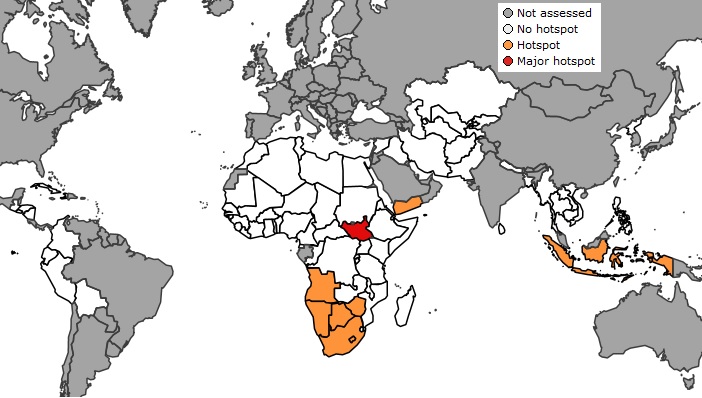East Africa is hit by flash floods, while rainfall deficits are expected to continue in South Africa and Indonesia

Related topics
Climate change Drought Flood Food security Natural disaster Global Food and Nutrition Securitydate: 04/12/2019
permalink: Main URL
The November edition of the JRC's Anomaly Hotspots of Agricultural Production (ASAP) assessment is now available at:
Anomaly Hotspots of Agricultural Production (ASAP) assessment
Main findings of the November global overview:
- November rainfall across East Africa was less exceptional than in October, but still led to localised floods and flash floods in Ethiopia, western Kenya and South Sudan. Despite the negative short-term impacts, the abundant rainfall is expected to be generally favourable for ongoing crop and rangeland growth seasons.
- In Southern Africa, rainfall conditions in November have improved compared to October, but deficits are still affecting southern Angola and Namibia, and the late onset risks a reduction in planted areas in South Africa, Lesotho and eSwatini. The difficult macroeconomic conditions in Zimbabwe are adding pressure to high vulnerability and chronic food insecurity.
- In Central America, weather conditions close to the postrera season harvest are generally favourable, except for localised areas in Honduras.
- In West Africa,the main season is close to harvest and production prospects are confirmed to be positive, with the exception of Gambia. Pastoral areas in Mauritania and northern Senegal also experienced drought conditions, especially in the early parts of the season.
- In Southeast Asia, Indonesia (mainly Java and south Sumatra) and Timor-Leste are experiencing a delay in main season rice planting, due to rainfall deficits associated with a strong positive Indian Ocean Dipole.
The next assessment is scheduled for the end of the third week of December 2019.
